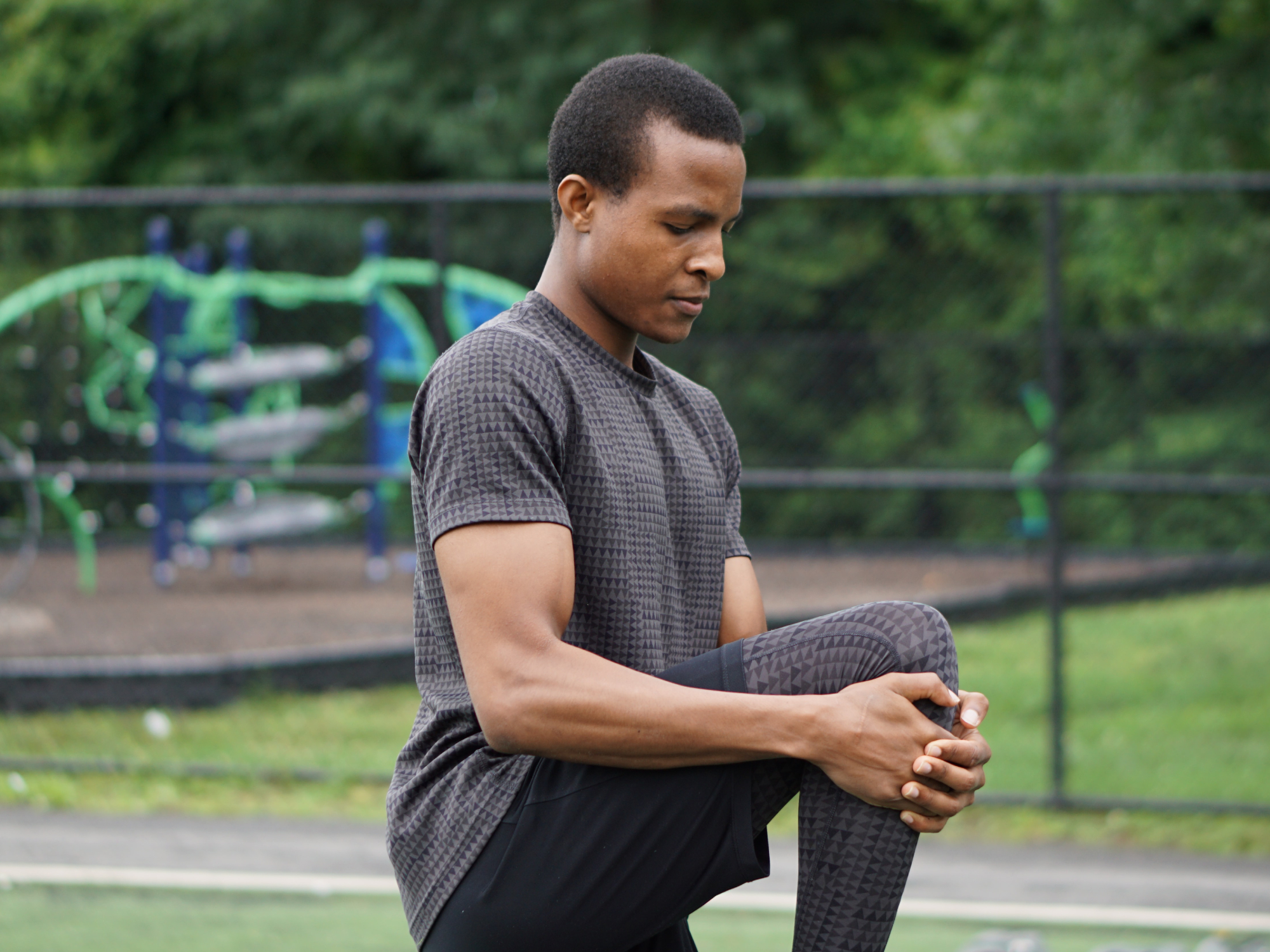

Even with gyms reopening at limited capacity, it’s still safer to exercise at home or outdoors. So, we’re dubbing this September Muscle Month to help you keep up your fitness, power, and health in socially distant times.
—
Anyone who played sports as a kid, or even just half-heartedly participated in gym class, may remember prefacing that activity by standing in a circle pulling on your limbs until they were well-stretched. If you’re still doing something similar today, it’s time to end your friendship with pre-workout stretches. Now dynamic warmups are your best friend.
For those unfamiliar with the concept, dynamic warmups get your body moving in a controlled fashion as you prepare to really go hard. When they’re well designed, they’ll connect seamlessly with whatever you’re planning to do, whether that’s lifting weights, sweating through an intense bodyweight routine, or playing a casual game of basketball.
If you’re going to crush a 10-mile run at a moderate-to-vigorous pace, for example, you’ll likely want to warm up with a light jog and build up to your desired intensity, says Yuri Feito, an associate professor of exercise science at Kennesaw State University. The more movements you aim to do, the more varied your warmup should be, he says.
Let’s talk a bit of (simplified) science: Muscles only work because they’re connected to your brain. So from a neuromuscular standpoint, a dynamic warmup increases your body’s awareness of where it is in space and how it’s moving, says Dixie Stanforth, a kinesiology and health education professor at the University of Texas at Austin.
“A good dynamic warmup does as much for your brain as it does for your body,” she says. “You’re trying to wake your body up and get it to understand there’s a challenge coming and you need to get ready for it both physically as well as mentally.”
Static stretching, meanwhile, is best-suited for when you’re cooling down at the end of a workout. It returns your muscles and tendons to their normal resting length, and it doesn’t make sense to do that before contracting them while you exercise, Stanforth says.
If that doesn’t convince you, stretching has been shown to reduce your ability to generate maximum force if you do it as a warmup.
What to do during a dynamic warmup
Because your warmup exercises should tie directly into your workout, they may change from session to session especially if you’re rotating the types of activities you do.
Your options may include bodyweight squats, which will get you moving all the way down and back up; standing or walking lunges, which have an added balance aspect; or walking with your arms out straight in front of you while trying to touch your toes to your palms (a movement you may hear called “toy soldiers” or “Frankensteins”).
Those are all fairly general purpose warmup exercises, so if you want to really drill down on specific areas, focus on your foot and ankle, hips, and thoracic spine (between your shoulders and lower back), Stanforth says.
Proper movement of the feet and ankles ensure healthier motion overall, well-oiled hips take stress away from the knees and back, and a mobile thoracic spine can reduce lower back and neck pain, according to a video developed by Stanforth and the University of Texas.
That video and 36 others depicting various exercises are freely available on iTunes, and they’re a good place to start if you’ve never done a dynamic warmup before. Even if you have, many of the videos are less than 2 minutes long and watching them will ensure you’re going through the motions correctly.
You don’t want to leap into anything your body’s not prepared for, though, even if it’s a warmup. Ken Look, club sports athletic trainer at Stanford University, doesn’t recommend jumping jacks for general fitness warmups until you’ve been exercising regularly for about two weeks. That’s because when you jump, especially on an unforgiving surface such as pavement, the force created when your body lands can be harmful if you don’t have the muscle to deal with it, he says.
What to think about while you’re warming up
Don’t rush through your warmup. You’re trying to increase blood flow to your muscles, raise your core temperature, and work in and out of positions you don’t normally get into, says David VanDyke, assistant athletics director at Rutgers University. When you’re working slowly, focusing on skill and form, the movement becomes ingrained, he explains.
Even if you can only do a few repetitions, try to increase your internal tension while doing so—like making a fist to smash through a weak sheetrock wall. Neurologically, this helps train your brain to know when to squeeze your muscles, which can prevent injury, Look says.
“Being able to create tension is one of the first things we forget to do if we’ve been sedentary for a long time,” he explains.
And once you’re done with all that tension, you can welcome your old friend stretching back with open arms, cool down, and relax.